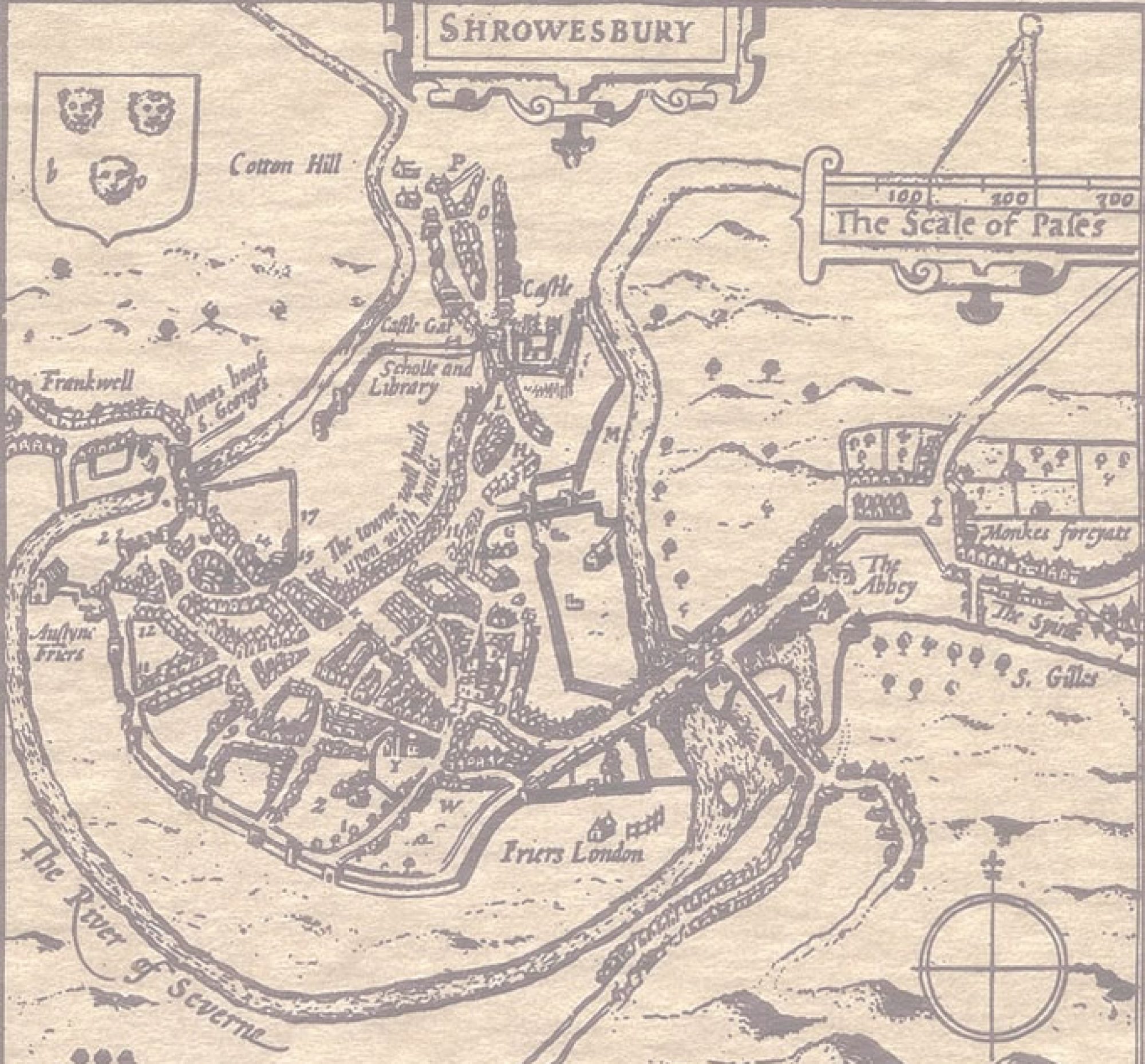Oteley (pronounced ‘Oatley’) Road is best-known these days as being the site of Shrewsbury Town Football Club, but the name is much more ancient than that.
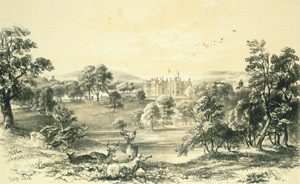
The Oteleys have been in Shropshire since Anglo-Saxon times. [footnote 1] One branch of the family was based near Ellesmere, their family seat, Oteley Park, being situated on the southeast side of the Mere. Oteley was probably the oldest deer park in Shropshire and boasted a large mansion with views over the lake. In the time of Henry VIII Elizabeth, daughter and heir of William Oteley, married Humphrey Kynaston who then inherited Oteley Park. [footnote 2]
The most notable member of the Kynaston family was Sir Francis Kynaston (1587-1642), who was intimate with both James I and Charles I, for whom he served as ‘Esquire of the Body’, a position of considerable influence. Sir Francis was also a polymath, being a noted poet, dramatist and translator, owned a notable music library and a fine telescope and promoted inventors and inventions. [footnote 3]He was also the author of a book which supported the idea that the king was not bound by laws passed under his rule. This was the attitude of the Stuart kings which was an important factor in causing the English Civil War.
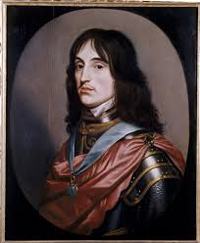
When war did break out, hardly surprisingly Oteley became a Royalist stronghold. On one occasion a small Parliamentary force under General Mitton was surprised by a several troops of Royalists leaving Oteley Park. [footnote 4] Richard Gough in his History of Myddle takes up the story. ‘[The Parliamentarians] shot a horse dead up to the gate [of Oteley Park], to keep it from opening; but [the Royalists] soon broke down the fence, and followed so close that all the General’s men were taken before they came to Ellesmere, except the General and one George Higley (a little fellow). At last, one that had a good horse overtook the General, and laid his hand on his shoulder, and said, “you are my prisoner”, but Higley struck the man in the face with his sword, which caused him to fall.’ The two of them escaped, but the prisoners weren’t so lucky, as thirteen were hanged by the Royalist commander Prince Maurice in reprisal for the Parliamentarians hanging 13 Irishmen they had taken prisoner.
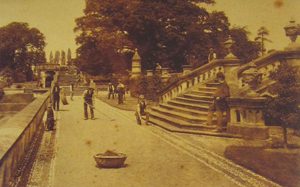
In the 1780s the male Kynastons also died out; the heiress, Mary, married James Mainwaring of Bromborough, Cheshire, who acquired the Oteley estate. His grandson was Charles Kynaston Mainwaring (1803-61), who inherited the estate shortly before his marriage in 1832, and became a much-respected landlord and magistrate, well-known for his extensive charities to the poor. [footnote 5] After his return from honeymoon in Italy he transformed the estate, pulling down the half-timbered Tudor house and replacing it with an enormous mansion in the Victorian Gothic style. He also laid out what one authority has described as ‘Shropshire’s most spectacular example of a formal Italianate garden’. [footnote 6]
A rare surviving record detailing the servants and what they were paid provides an insight into a large house of that period. [footnote 7] Servants included butler, footmen, coachmen, gardeners, grooms, stable lads, gamekeepers, housekeeper, lady’s maids, cook, under cooks, housemaids, and dairy maids. The butler was paid up to £50 a year and the cook £40. Youngsters were very quickly given an increase in wages with age and experience, and most of the servants’ wages rose steadily over time. One whose didn’t was Frances Davies. Her mistress wrote, ‘Frances Davies came to live here in 1830 after the death of my dearest mother, with whom she had lived about 25 years as her maid.’ She was given a small income on her retirement, and she eventually died on July 15th 1855 ‘after a painful illness’. The notebook extols the virtues of some (‘a much respectable good servant’), but others were summarily, if regretfully, dismissed. For example, Thomas Higginson was a stable lad, and the 1845 Mr Mainwaring ‘parted with T Higginson for conduct I would not put up with; but with much regret, as I consider him likely to make a good servant.’ Much later, however, he wrote ‘[Higginson] turned out very bad indeed’. At the funeral of Charles Kynaston Mainwaring in 1861 four of the servants were chosen as pall bearers. We know the story of two of them. The first was Samuel Edwards, who came as a groom in 1849 at wages of £7 a year. The note for October 23rd 1852 states that ‘Samuel Edwards left, and a better servant I never had in my life. I regret his leaving very much, but hope it will be to his advantage to better himself.’ This he did, for on April 1st 1856 ‘Samuel Edwards returned to my service at the annual wage of £34, he funding his own livery’ (he had then become a footman). One of the other servants who carried the coffin was Henry Davies, who was an under groom, who started on £8 a year in 1859, increasing by increments to £12 in 1862, when he ‘left the stables to be woodman under his father, the gamekeeper’.
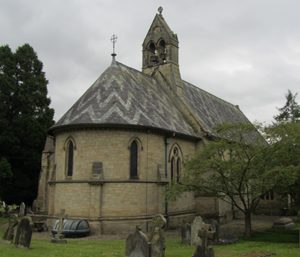
Charles Kynaston Mainwaring was so highly thought of that Frances his wife and Salusbury his son, decided to demolish the church at Welshampton and build another as a memorial to him. They chose George Gilbert Scott (1811-78), one of the best-known architects of the day, to design it. [footnote 8] The lozenge-shaped decoration of the roof is a distinctive feature of a fine church. Despite such large expense, the family continued to prosper, Salusbury’s estate being valued at over £313,000 on his death in 1895 (perhaps £30m in today’s money). [footnote 9] The Oteley estate remains in the Mainwaring family, but the Victorian mansion proved far too expensive to maintain, so it was demolished in 1960 and a modern house built in its place. [footnote 10]
Footnotes
[1] www.houseofnames.com/oteley
[2] Francis Leach, The County Seats of Shropshire, Eddowes, 1891, p.19ff
[3] http://www.historyofparliamentonline.org/volume/1604-1629/member/kynaston-sir-francis-1587-1649
[4] Richard Gough, The History of Myddle, Penguin Edition 1981, p.74
[6] Paul Stamper, Historic Parks and Gardens of Shropshire, Shropshire Books, 1996, p.81
[8] St Michael and All Angels’ Church, Welshampton, Wikipedia page
